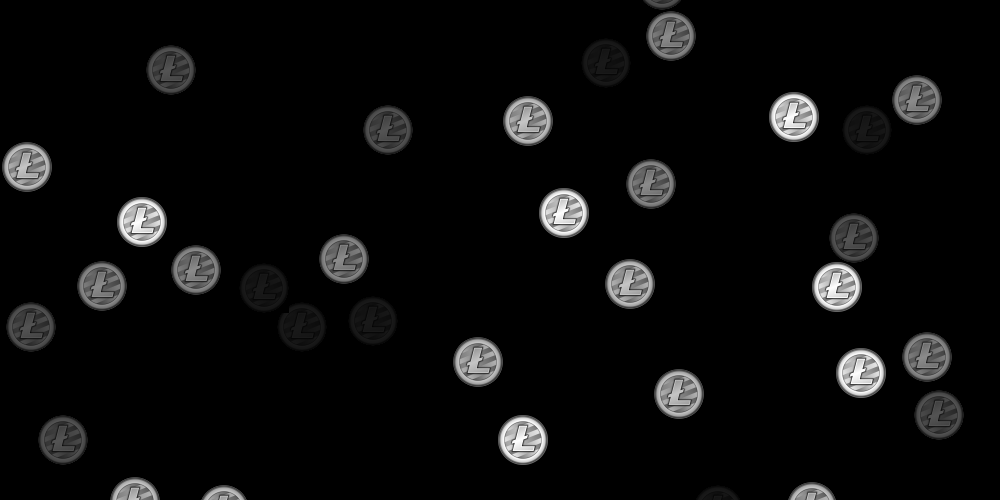Next month, Litecoin will undergo what’s called a “halving” — a term popularized by the cryptocurrency space to refer to the point during a cryptocurrency’s life when the reward paid out for mining the coin is cut in half. But why should you care?
“The Halvening”
Reward halving is an important mechanic of cryptocurrencies that helps people see value in the coin by way of increased scarcity. As you can see in the chart below, Litecoin has experienced one halving before now — that one occurred in August 2015. Dependent on network activity, the next one is on schedule to hit on August 6th.

Why create scarcity with a halving?
If there were unlimited coins, each would hold less importance, or value.
Founder of BitcoinTalk.org, “satoshi” (no, not the Satosihi), put it this way in a discussion back in 2010:
As a thought experiment, imagine there was a base metal as scarce as gold but with the following properties: boring grey in colour, not a good conductor of electricity, not particularly strong [..], not useful for any practical or ornamental purpose .. and one special, magical property: can be transported over a communications channel…
Litecoin is very similar to Bitcoin but has faster transaction speeds. So theoretically, as long as demand for Litecoin increases while the supply is reduced, the price will rise.
Currently, there are about 62 million Litecoins in circulation with a limit of 84 million to ever be created. This means that 74 percent of Litecoins to ever exist are already in peoples’ possession.
How does the Litecoin halving affect buyers and investors?
If people maintain interest in Litecoin, halving should have a positive effect on price in the long term.
That certainty carries with it an equal amount of uncertainty, as nobody knows exact time frames or price points at which the event will occur.
This means the short term impact of halving events is still very speculative. Bitcoin is the best example for short term impacts because it has the longest history in crypto.

This weekly Bitcoin chart shows a pattern of halving occurring between growth cycles, at a low point.
Petar Zivkovski, the director of operations at WhaleClub told Coindesk in 2016:
This is the classic ‘buy the rumor, sell the event’ cycle. In this case, the event is the halving. Smart (and patient) money, in the most part, is no longer looking to accumulate. Their holdings have more than tripled in value.
How does the Litecoin halving affect miners?
In theory, halvings are beneficial for early investors, but the function has some down sides as well. When the rewards for mining decreases, that means it takes more powerful electronics to solve Litecoin’s algorithms.
Many people have been able to make significant money at home using their computer’s power to mine Litecoin. After a halving, miners need twice the power to get the same rewards that they were receiving before.
Using a cryptocompare.com calculator, you can see that while Litecoin is at $117, a miner can make around $5000 per year creating the coins while spending about $1000 for the electricity required. If Litecoin is at the same price after halving, miners would make about $2500 per year while cost for electricity stays the same.

What happens to the blockchain?
Halvings also can affect the consensus, a flagship feature of blockchain tech. In order to approve information in a blockchain, at least 51 percent of the blocks need to validate that information.
So, for example, instead of a corporation authenticating a financial transaction, the transaction is sent through the blockchain and authenticated by each of the blocks themselves.
When it stops being worth it for individuals to create blocks (which contain coins), it gives more power, or more control of the consensus to companies who own warehouses full of mining equipment.
Does Litecoin halving promotes institutional control?
According to Bloomberg Business, about 1000 people control 40 percent of Bitcoin. Institutional control of bitcoin is not only a threat to the integrity of the consensus, but to price in general.
Institutions or individuals who hold a large amount of cryptocurrency are known as “whales” in the community. If a whale decides it is a good time to sell their 25,000 Bitcoin, they have the power to decrease price and create fear in the market.
There are also no regulations to stop big players in the market from coordinating with each other. If “whales” make moves together, they could quite literally manipulate the market.
Traders theorize this is done when price is nearing a place where many investors would want to buy or sell. If whales buy enough to push price into that technical indicator, it can trigger a domino effect of retail purchases, shifting price prematurely.
This is another threat that comes with less incentives for independent mining. Whales have less opportunity to accumulate through mining as rewards decrease, but still are much more capable than a guy with a desktop.
Final thoughts
There is a lot to appreciate about halving events, and crypto might not be where it is today without them. The idea of scarcity contributes to mass adoption by giving a worldly trait to something that many don’t fully grasp the concept of.
Casual investors need to think about how long they are looking to have their money tied up in Litecoin. If history repeats itself, the halving may not be an ideal time to pull money out of Litecoin, even though it is beneficial to long term price.
In the end, the success of the halving concept depends on the success of crypto on a macro scale. No matter how scarce Bitcoin and Litecoin are, they still have to find tangible reasons to hold value — whether that be through transactions, trust, serving as a store of value, or powering web apps.
